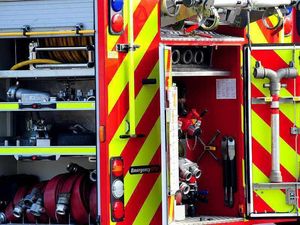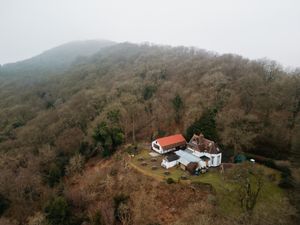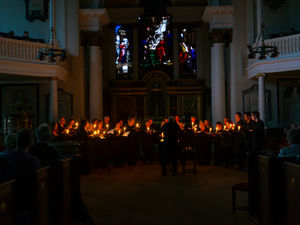How police learn to deal with rioters - in Shropshire
[gallery] It could be a scene from London or any other major city hit by last month's riots. It could be a scene from London or any other major city hit by last month's riots. Police come face to face with angry baseball bat wielding protesters, shield themselves from bricks and are showered with petrol bombs. The location? A secret hangar in Shropshire, where thousands of officers a year are trained to deal with outbreaks of public disorder much like the angry scenes from across the country in August. Every week about 100 officers, including staff from West Mercia Police, visit the base and face scenarios based on real-life situations. They include dealing with campaigners at a university unhappy with an environmental project being visited by an MP and anarchic protestors who wreak havoc when they commandeer a bank. Dozens of officers wearing flame-retardant overalls, stab-vests, shin, thigh, and elbow guards, and helmets, carry riot-shields and batons as they are put to the test in a wide range of intense situations. Read more in today's Shropshire Star

It could be a scene from London or any other major city hit by last month's riots.
Police come face to face with angry baseball bat wielding protesters, shield themselves from bricks and are showered with petrol bombs.
The location? A secret hangar in Shropshire, where thousands of officers a year are trained to deal with outbreaks of public disorder much like the angry scenes from across the country in August.
Every week about 100 officers, including staff from West Mercia Police, visit the base and face scenarios based on real-life situations.
They include dealing with campaigners at a university unhappy with an environmental project being visited by an MP and anarchic protestors who wreak havoc when they commandeer a bank.
Dozens of officers wearing flame-retardant overalls, stab-vests, shin, thigh, and elbow guards, and helmets, carry riot-shields and batons as they are put to the test in a wide range of intense situations.
"They are normal police officers," said Inspector John Pickard, who has run the centre for 18 months and has more than 17 years experience in public disorder.
"A percentage of every force will come to these sessions.
"Uniformed officers come to us to be trained in riot control, public disorder, so they are available 24/7.
"We also do disaster training, disaster victim identification training, chemical and nuclear training."
The three day courses are run for officers across the West Midlands, West Mercia and Staffordshire forces, as well as ambulance and fire and rescue services.
The training is run for 45 weeks of the year. Officers are drilled on tactics and then asked to put the theory into practice.
Following a briefing from commanders the day began yesterday with officers being made to walk through a barrage of Molotov-cocktails, the flaming petrol setting their boots and suits on fire.
Within minutes the first scenario was started, featuring students, campaigners, members of the press and dignitaries, as well as Public Safety Units intent on controlling the situation.
"It's never set to a script, we see how the officers react and constantly make changes to the scenarios," added Inspector Pickard.
"The tactics we use look quite military.
"We form a plan and follow the tactics to deal with these issues.
"If you can we want to negotiate before we get to this.
"We want to allow the public to get on with their business."
A second scenario saw officers attempting to deal with a protest while anarchists broke into a building, throwing missiles at police and battering them with baseball bats, smashing a riot-shield.
The intensity is increased throughout the day before the hangar doors are closed to create a night time situation in the pitch black.
A spokeswoman for the centre said: "We need to ensure that forces are fit and able to deal with any disorder that comes their way.
"This training demonstrates the latest tactics at their disposal."
By Paul Mannion





